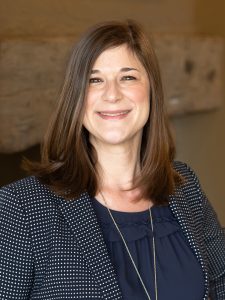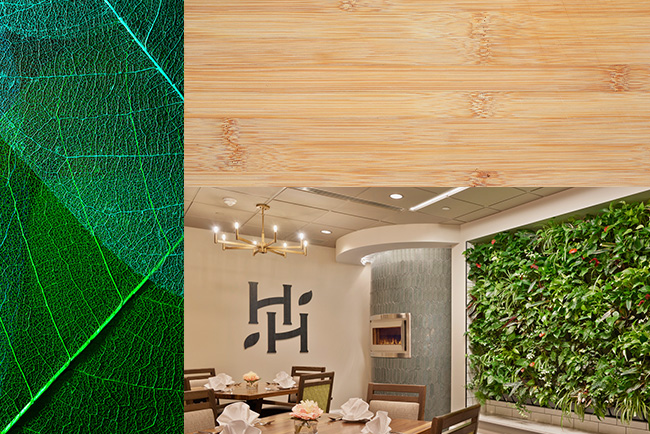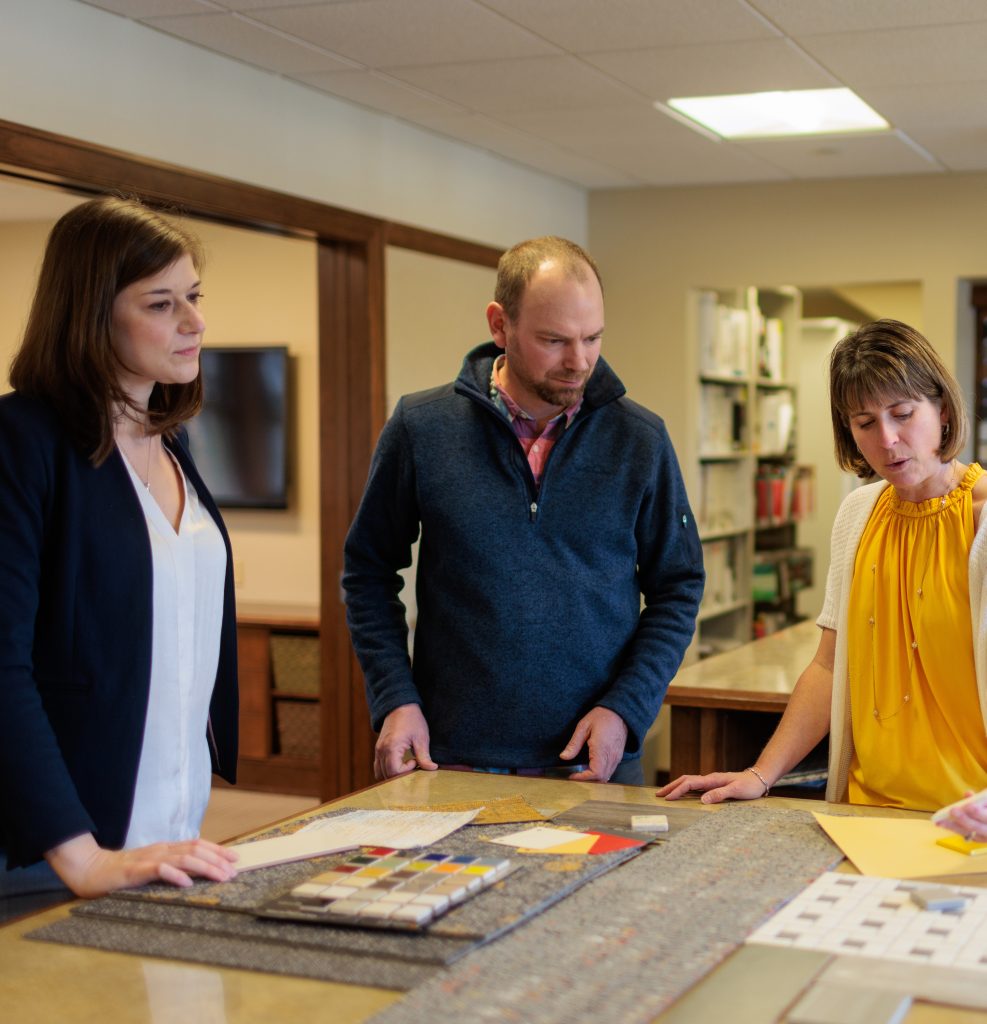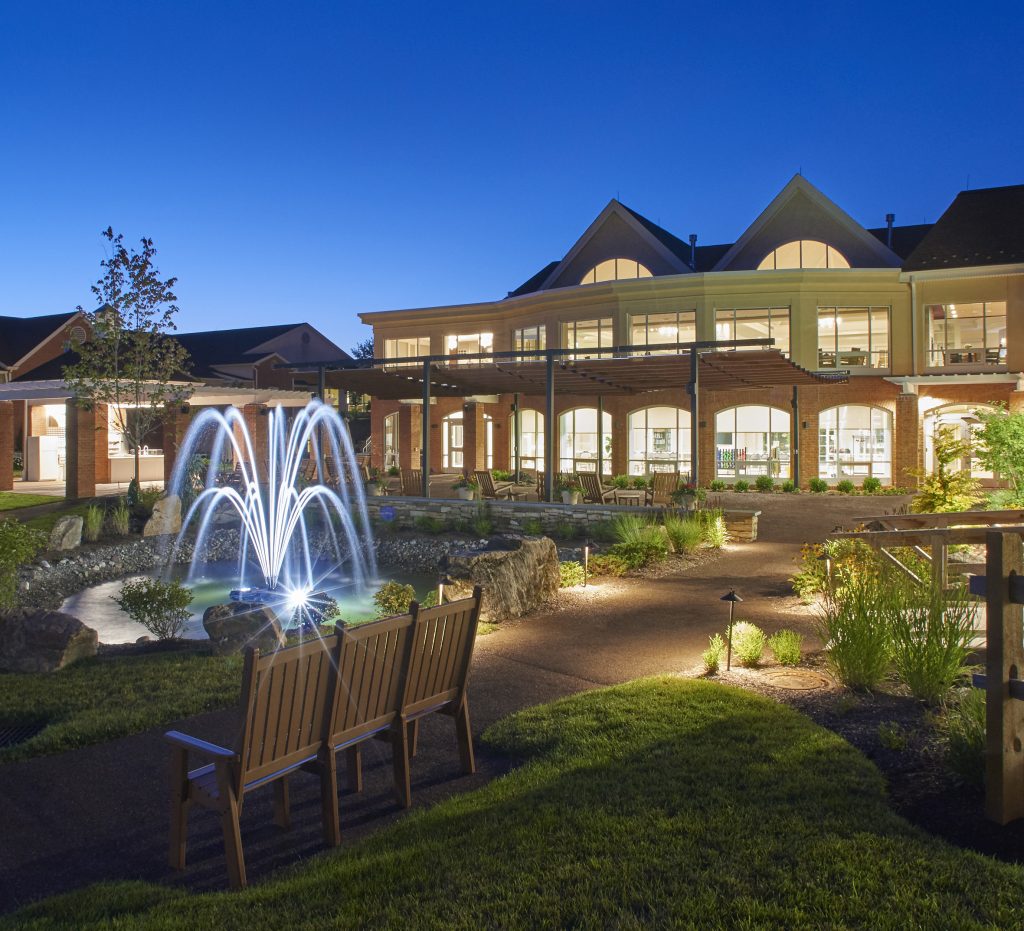According to the WELL Building Standard, environment plays a significant role in active living and physical activity. Our team works with Life Plan Communities to create spaces that support holistic wellness by minimizing potential physical and mental barriers and fostering engagement.
The benefits of physical activity are well documented, along with the fact that most people need more of it. This is especially true for older adults. Mather Institute’s Age Well Study has documented that people living in life plan communities report more healthy behaviors than other older adults, in part due to the ready availability of resources. In recent years, we have seen a number of life plan communities place renewed emphasis on resident health and well-being by expanding or updating their wellness facilities.
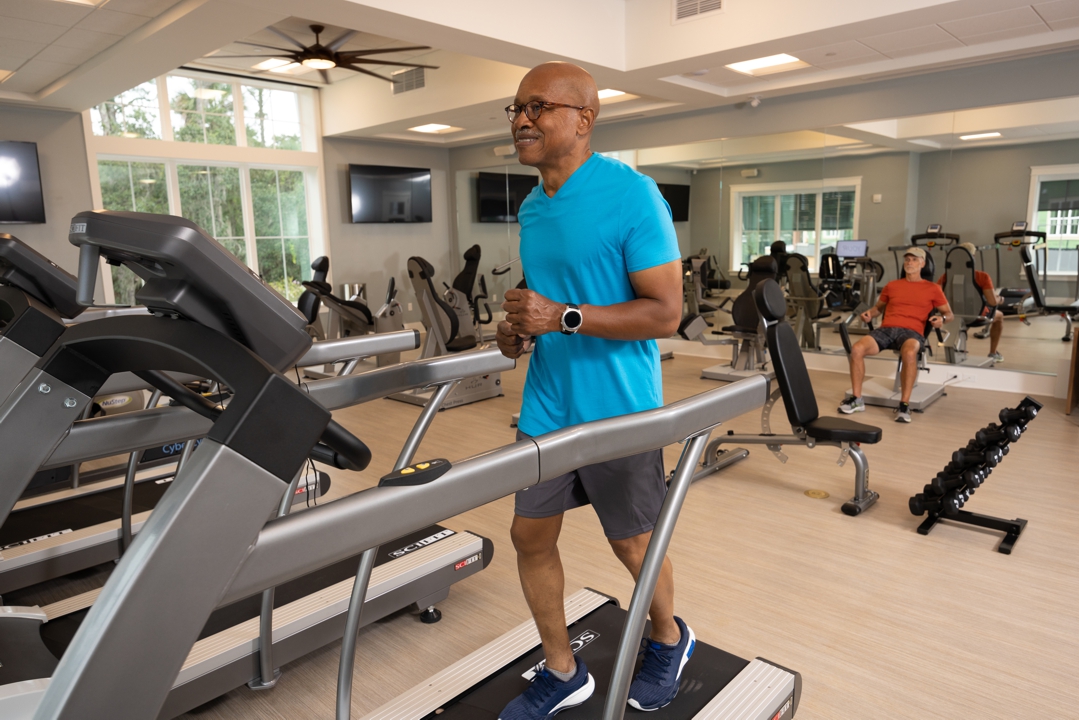
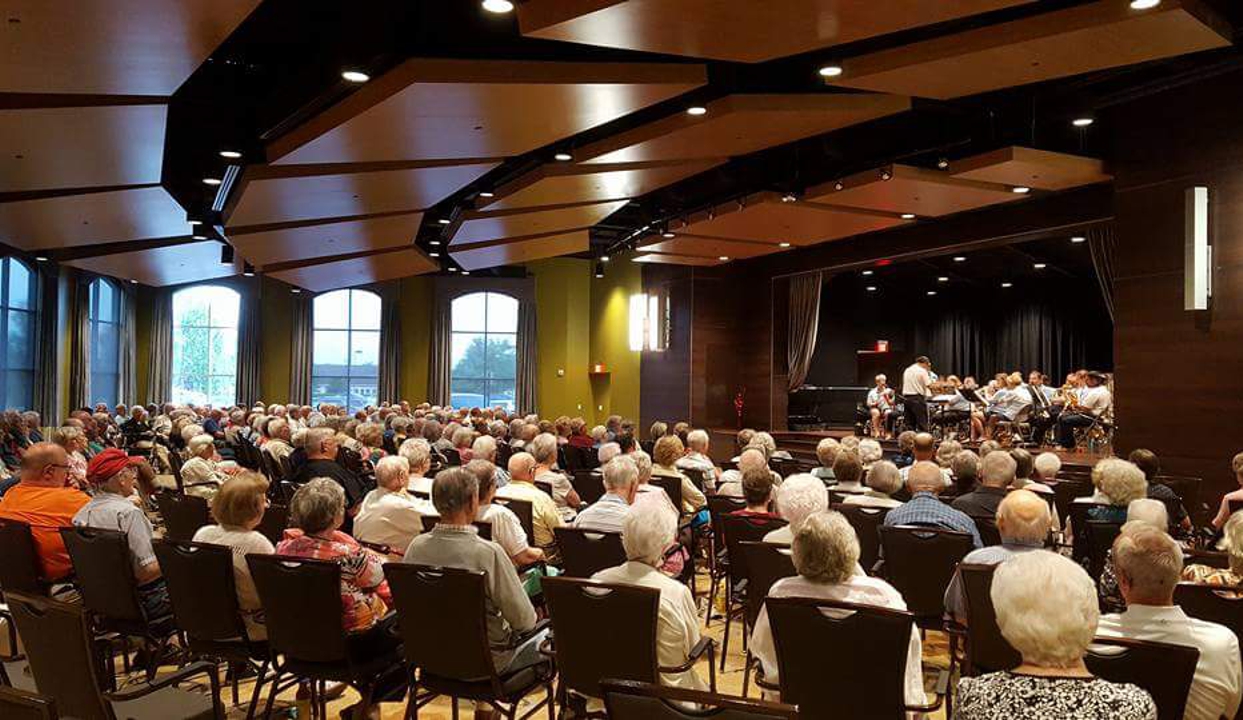
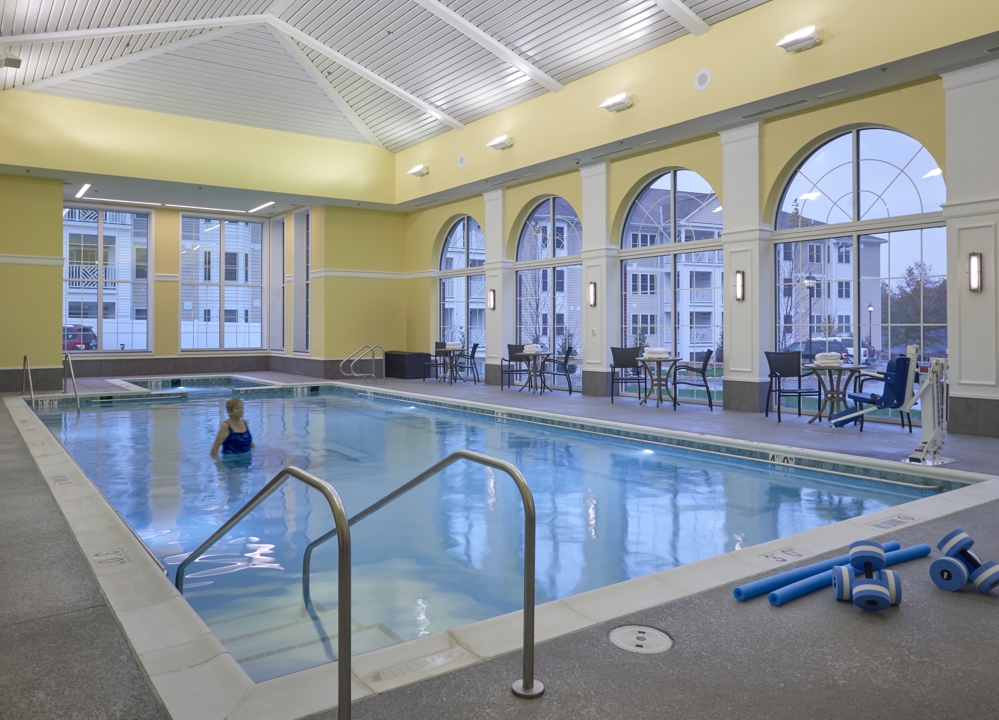
Encouraging Older Adults to Utilize Wellness Amenities
Jessie: Spaces should be designed to be visually inviting, colorful, interesting, and fun! The various fitness amenities should be arranged to allow ample space for different activities, promote views to nature and encourage equipment use.
Matt: Branding and signage are important to bring attention to wellness spaces and set the right tone for the activities occurring in each area. This extends beyond the typical exercise equipment rooms, classrooms and aquatics centers.
Many of the communities we work with have wellness circuits on their campus. One way to extend their use is by incorporating dedicated indoor stations and activity areas as part of the circuit. Cohesive finish colors, flooring and branding can tie the different areas together and guide participants through the indoor and outdoor components of the circuit. This can help to increase participation by making the circuit more visually accessible and extending use throughout hot or cold seasons for those who don’t wish to venture outdoors.
Interior Design Considerations for Fitness Areas
Matt: Ceiling fans are a good idea to provide moving air in active areas, along with appropriate ventilation systems for fresh air/air exchanges. Mirrors help to make fitness areas feel large and bright, but they are also a critical safety component for exercise equipment areas, physical therapy and fitness classrooms to check for proper positioning and monitor progress.
Other recommendations include resistant wall materials from four feet down to the floor, as well as vinyl fabrics that can hold up to a rigorous cleaning regimen.
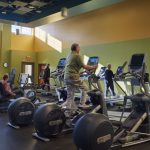
Finish materials selections can help to define the type of activities occurring in a particular space:
- With heart-pumping activities, a bold color palette and materials that provide subconscious references to the body as a machine would work well.
- Conversely for stretching/meditative settings, we tend to favor a neutral or muted color palette and natural materials highlighting craftsmanship to provide subtle references to the body as spirit.
Jessie: Acoustics are critical in fitness spaces. We often coordinate speakers into the design, and in fitness spaces with amplified sound and music pumping, it can get loud! Proper acoustical detailing and treatment is essential to keep sound from transferring to adjacent, quieter spaces. These measures can also help to moderate the quality of sound transmission within a space so that participants can comfortably participate in staff-led exercise programs.
We recommend flooring with a resilient backing to provide underfoot comfort and impact resistance. Ceiling elements can be playful such as clouds, blades and baffles or colorful lighting fixtures.
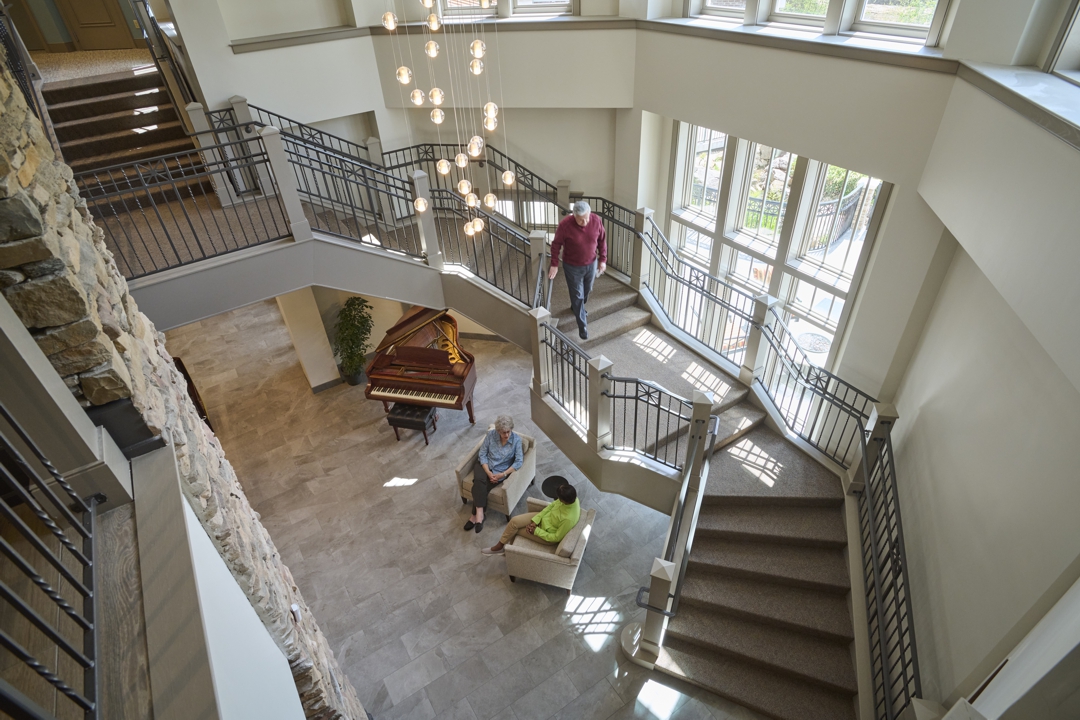
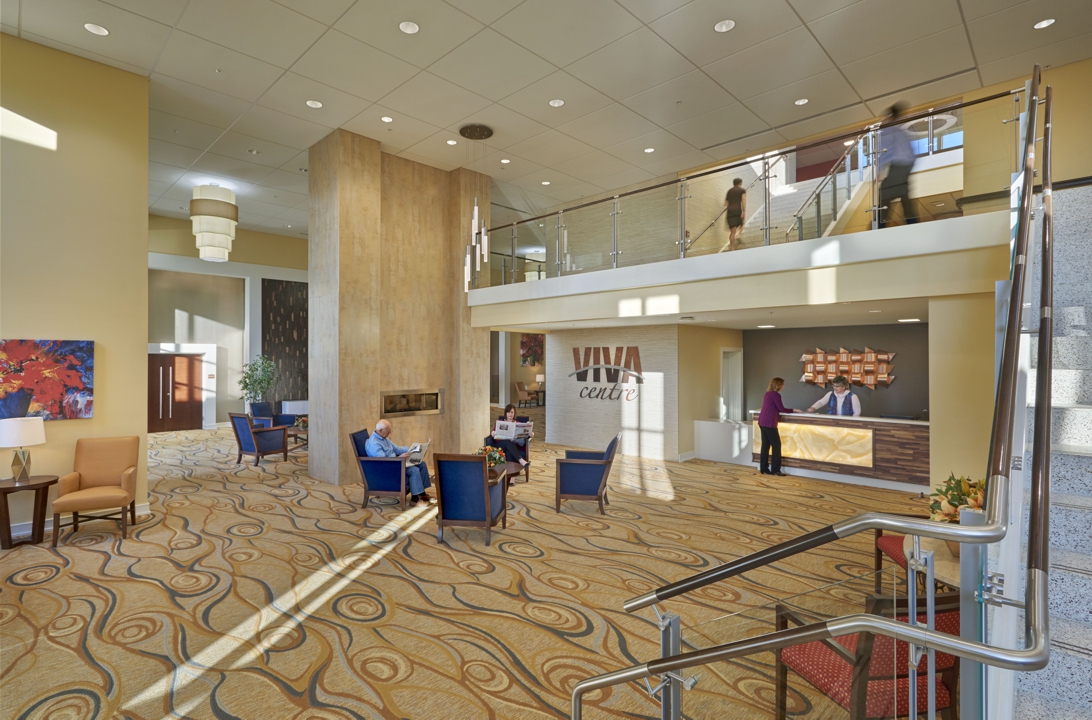
Assisting Clients with Fitness Area Space Layouts
Jessie: Space planning is critical for functionality of exercise equipment rooms, classrooms and spas. We provide guidance for clearances around equipment and coordinate with power and data in the space.
Matt: We start by listening to the client, community leadership and wellness staff members, and ask questions about intended use and programs taking place in each area. We will survey existing equipment and lay out floor patterns (carpet or LVT) to coordinate with individual program activities (e.g. physical therapy, yoga, stretching).
Trends in Wellness and Physical Activity for Older Adults
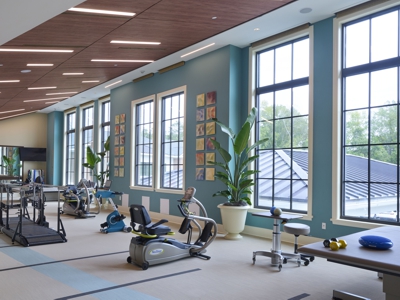
Bishop Gadsden Health and Rehabilitation Center | Charleston, SC
Jessie: A positive trend we are seeing is a greater emphasis on wellness and physical well-being at all levels of senior care. LiveWell will have a Movement Studio and Equipment Studio in its Center for Resilient Living, designed to help people living with dementia live well. There is also a large patio in the courtyard intended to be used for yoga and meditation. Wellness is a community focus for LiveWell, and the new Center for Resilient Living strategically locates the wellness spaces immediately beyond the building’s lobby.
Similarly, Bishop Gadsden’s new health center features a large rehabilitation gym with soaring windows and bright colors to help restore resident health and well-being.
Matt: A big trend is that more people, of any age, want to live in walkable communities that connect them to the outdoors. Desired amenities include maintained trails for walking, biking, roller blading; waterways for canoeing, boating and kayaking, hiking trails and other activities like rock climbing. It’s not uncommon to see climbers in their 70s and 80s at the crag. For communities not in close proximity to these types of amenities, consider opportunities for partnerships with local community centers or even introduce a rock wall as a unique on-site amenity that will allow for intergenerational connections as well. We’re also starting to see golf simulators as a popular life plan community addition that will encourage residents to keep moving.
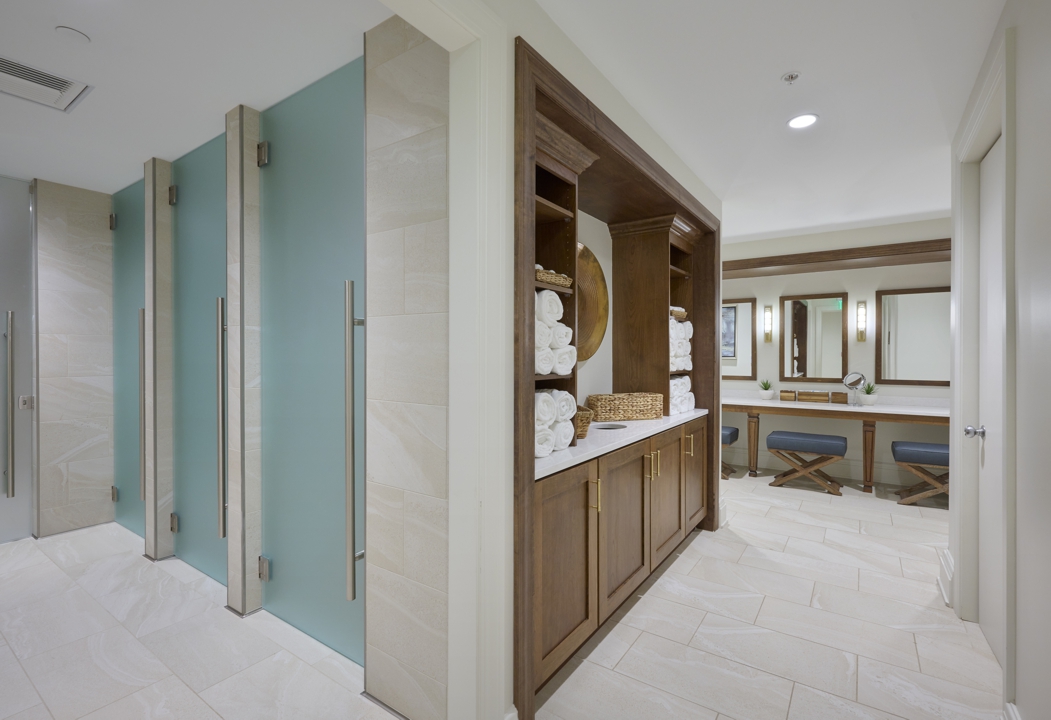
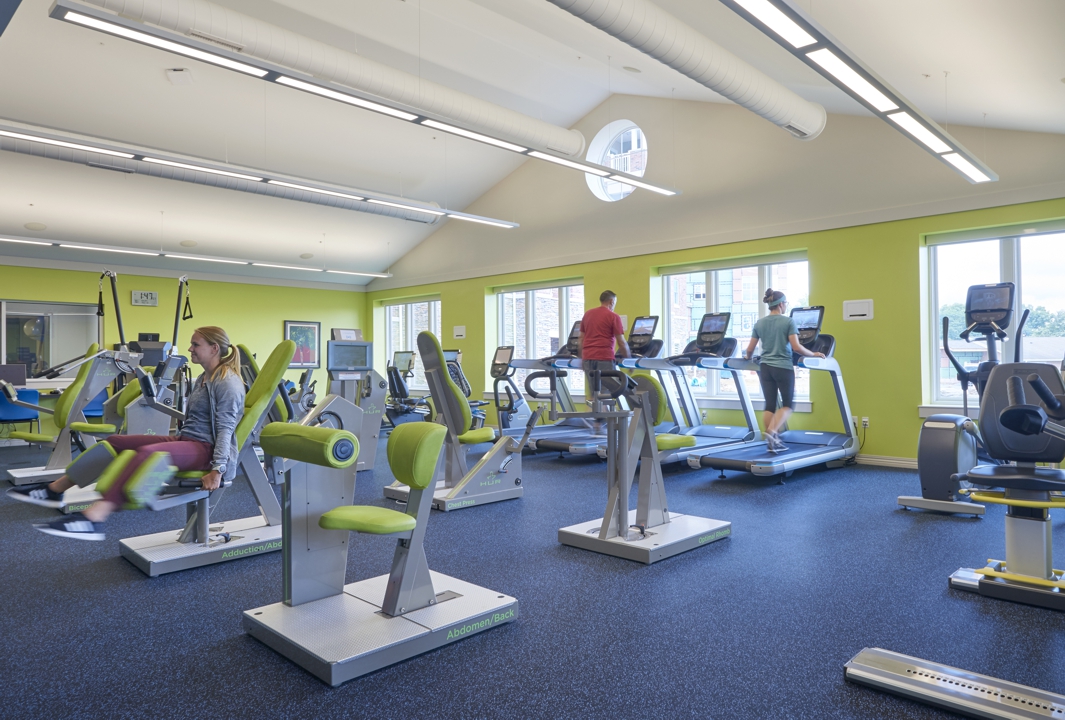
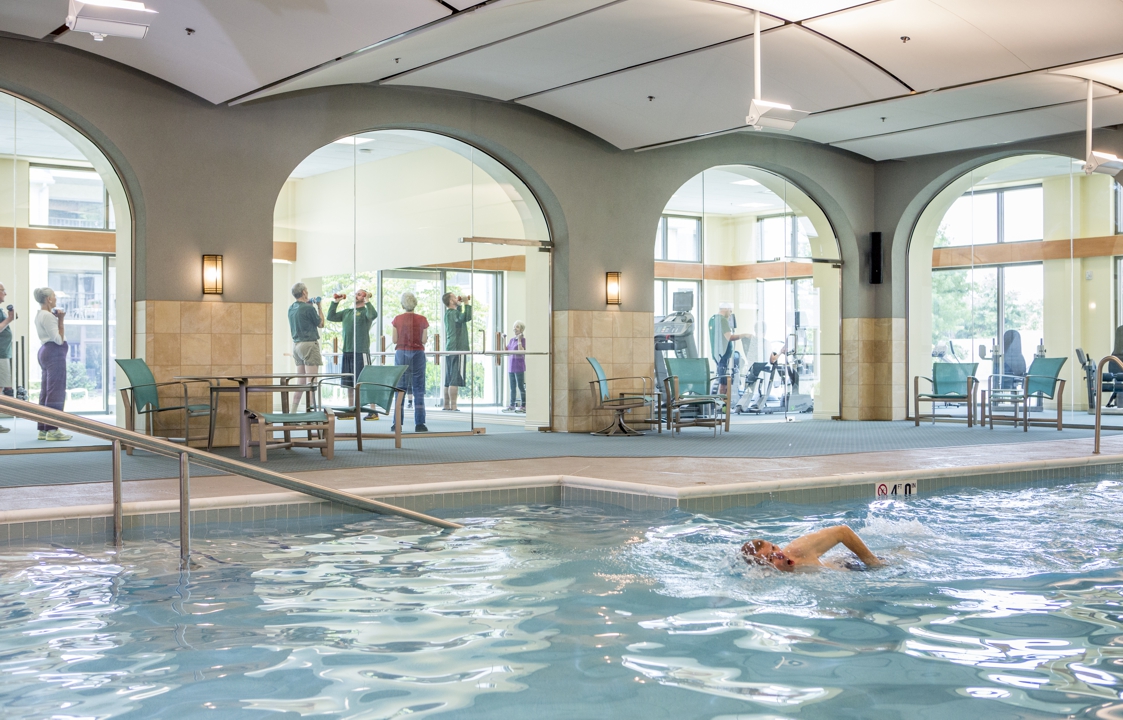
Although wellness initiatives are sometimes driven by marketing need to appeal to consumers, there is much more to be gained from encouraging physical activity for residents AND staff members. Numerous studies have shown the connection between sedentary behavior and negative health outcomes. Conversely, quality of life—physical, emotional and mental health—can be improved with physical activity. Our team is committed to helping life plan communities create appealing, comfortable and diverse opportunities for physical activity.
About the Authors
Matthew is an NCIDQ-certified interior designer with over 20 years of experience as a designer and craftsman. He is involved in projects from the initial conceptual design charette through design and documentation, concluding FF&E selection and installation. He recently developed strategies to delve into a client’s vision for amenity spaces via venue voice exercises and by supporting them with custom branding. As part of this effort, Matthew is a frequent presenter at state and national conferences, speaking about interior design and the value of repositioning and branding. He serves as a board member of the Columbia HARB and The Historic...
Learn More About MatthewJessie has 20-plus years of experience in the interior design industry and has spent most of her career focusing on architectural interiors. She is passionate about transforming clients’ visions into purposeful, meaningful, and supportive environments. Jessie is a registered architect in Pennsylvania and holds both NCIDQ and NCARB certificates, is a LEED Accredited Professional with a Building and Design specialization, and is also a WELL accredited professional. She has served as a volunteer and former board member of the Council for Interior Design Qualification (CIDQ), is a member and former board member of the IIDA PA/NJ/DE Chapter, an IIDA student...
Learn More About Jessie

